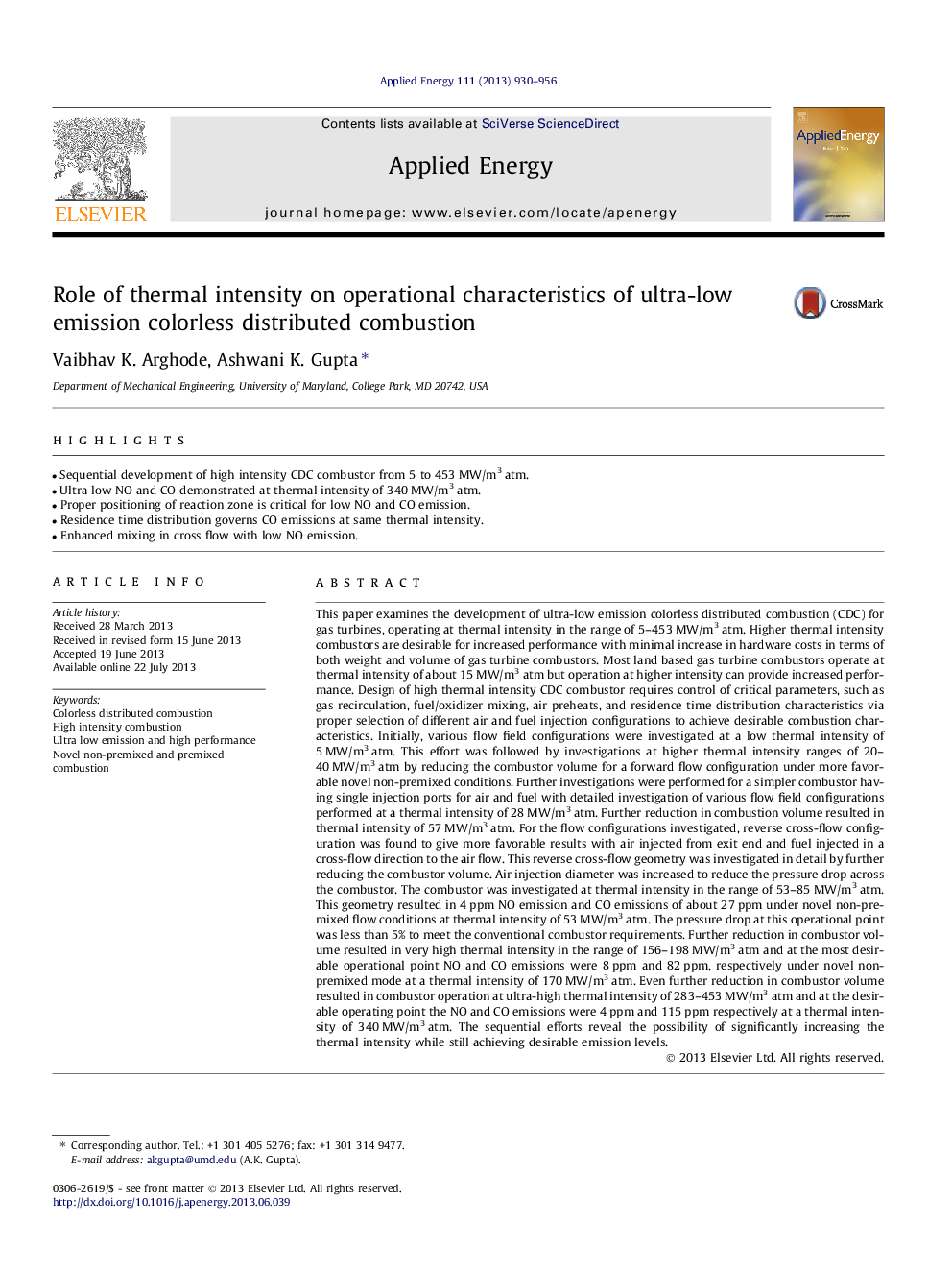| Article ID | Journal | Published Year | Pages | File Type |
|---|---|---|---|---|
| 6692606 | Applied Energy | 2013 | 27 Pages |
Abstract
This paper examines the development of ultra-low emission colorless distributed combustion (CDC) for gas turbines, operating at thermal intensity in the range of 5-453Â MW/m3Â atm. Higher thermal intensity combustors are desirable for increased performance with minimal increase in hardware costs in terms of both weight and volume of gas turbine combustors. Most land based gas turbine combustors operate at thermal intensity of about 15Â MW/m3Â atm but operation at higher intensity can provide increased performance. Design of high thermal intensity CDC combustor requires control of critical parameters, such as gas recirculation, fuel/oxidizer mixing, air preheats, and residence time distribution characteristics via proper selection of different air and fuel injection configurations to achieve desirable combustion characteristics. Initially, various flow field configurations were investigated at a low thermal intensity of 5Â MW/m3Â atm. This effort was followed by investigations at higher thermal intensity ranges of 20-40Â MW/m3Â atm by reducing the combustor volume for a forward flow configuration under more favorable novel non-premixed conditions. Further investigations were performed for a simpler combustor having single injection ports for air and fuel with detailed investigation of various flow field configurations performed at a thermal intensity of 28Â MW/m3Â atm. Further reduction in combustion volume resulted in thermal intensity of 57Â MW/m3Â atm. For the flow configurations investigated, reverse cross-flow configuration was found to give more favorable results with air injected from exit end and fuel injected in a cross-flow direction to the air flow. This reverse cross-flow geometry was investigated in detail by further reducing the combustor volume. Air injection diameter was increased to reduce the pressure drop across the combustor. The combustor was investigated at thermal intensity in the range of 53-85Â MW/m3Â atm. This geometry resulted in 4Â ppm NO emission and CO emissions of about 27Â ppm under novel non-premixed flow conditions at thermal intensity of 53Â MW/m3Â atm. The pressure drop at this operational point was less than 5% to meet the conventional combustor requirements. Further reduction in combustor volume resulted in very high thermal intensity in the range of 156-198Â MW/m3Â atm and at the most desirable operational point NO and CO emissions were 8Â ppm and 82Â ppm, respectively under novel non-premixed mode at a thermal intensity of 170Â MW/m3Â atm. Even further reduction in combustor volume resulted in combustor operation at ultra-high thermal intensity of 283-453Â MW/m3Â atm and at the desirable operating point the NO and CO emissions were 4Â ppm and 115Â ppm respectively at a thermal intensity of 340Â MW/m3Â atm. The sequential efforts reveal the possibility of significantly increasing the thermal intensity while still achieving desirable emission levels.
Keywords
Related Topics
Physical Sciences and Engineering
Energy
Energy Engineering and Power Technology
Authors
Vaibhav K. Arghode, Ashwani K. Gupta,
